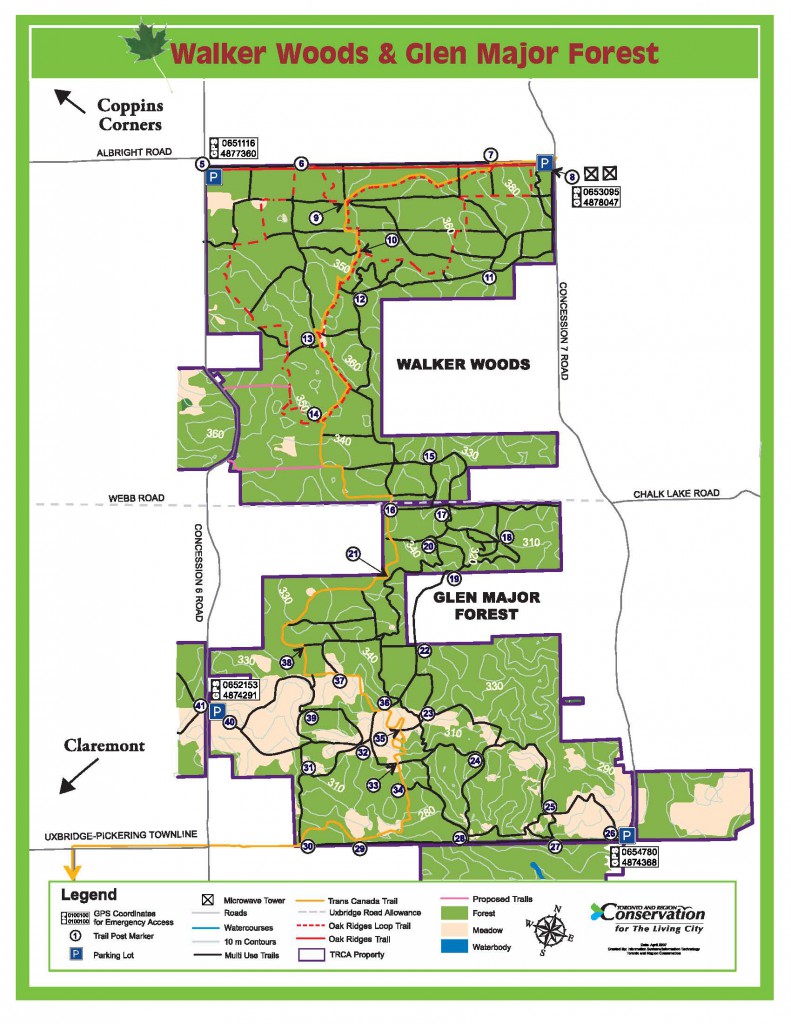We caught a fisher! On camera that is. On February 2, 2016, Toronto and Region Conservation’s (TRCA) Environmental Monitoring team managed to capture rare images of a male fisher investigating a constructed den box at Glen Major Forest. The fisher (Pekania pennanti) is a remarkable North American mammal few get the privilege to see, especially in close proximity to a highly urbanized landscape such as the Greater Toronto Area (GTA).
[advanced_iframe securitykey=”b846dca6faa2d4c5cdfef39ad6176d03cf94a66b” use_shortcode_attributes_only=”true” src=”https://www.youtube.com/embed/l83FJs0Jpbk” frameborder=”0″ allowfullscreen=”true” content_styles=”width:100%” width=”100%” enable_responsive_iframe=”true” iframe_height_ratio=”0.5625″]
Four den boxes have been established in Glen Major Forest by TRCA, as part of a fisher research study initiated in 2014 in partnership with the Ontario Ministry of Natural Resources and Forestry (OMNRF). The den boxes are baited to attract female fishers to move in, have their kits and rear their young. Designed by TRCA, the boxes are a new approach to monitoring local fisher populations, having had limited success with just baited hair snare stations in the past. Motion activated trail cameras are attached to trees opposite each box to capture images of animals trying to access them. Each den box is equipped with a logging instrument to monitor internal temperatures if they become occupied by fishers. A sticky pad is placed at the top of the entrance hole for hair collection to be analyzed later for genetic profiling.
The resulting camera footage and hair samples from this study will enable TRCA and OMNRF to get an idea about the number and sex of fishers inhabiting Glen Major Forest, as well as their genetic profile in relation to neighbouring populations. This information will add to the knowledge of the fishers’ range and recolonization in parts of Ontario (personal communications, OMNRF). Video documentation will provide additional insight and improve understanding of its natural behaviour. The boxes also help to facilitate habitat needs for this ‘area-sensitive’ mammal, who prefers large continuous mixed forests with a diversity of tree species and ages (OMNRF, 2000). Gaining a better understanding of the fisher and its habitat will help TRCA better monitor and manage wildlife resources now and in the future.
Local Fisher Populations
The fisher is considered to be a Species of Regional Conservation Concern in TRCA’s jurisdiction. Historic habitat loss and fragmentation in Southern Ontario in the 1800s, as well as over-harvesting, contributed to fishers becoming extirpated (locally extinct) in the GTA (Carr et al. 2007; Findlay et al. 2007). Sightings of the fisher have increased in recent years, most likely due to the maturation of forests that replaced land once used for agricultural purposes (Lancaster et al. 2008; Findlay et al. 2007). Glen Major Forest, where the fisher is known to reside, is designated as an Area of Natural and Scientific Interest (ANSI) and is located in the northeastern portion of the Duffins Watershed, in the township of Uxbridge in Durham Region. Additionally, the forest complex is situated on the Oak Ridges Moraine. Recent studies do confirm that the fisher has expanded its range and recolonized parts of Southern Ontario from remnant clusters in the Algonquin, Adirondack, Gatineau, Midhurst and Bancroft areas (Carr et al. 2007).

Acknowledgements
Special thanks to C. Sadowski and the Wildlife Research & Development Section of the OMNRF in Peterborough, Ontario for their continued support and involvement, L. Davis and the Davis Environmental Ltd. consulting group for the artificial den box schematics and overall study design, and G. Macpherson and the Restoration Projects group of the TRCA for supplying the materials to construct the den boxes.

